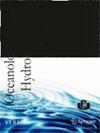Differences of water chemistry, bird assemblages and nutrient loads introduced by waterbirds into morphologically similar waterbodies
IF 1
4区 环境科学与生态学
Q4 OCEANOGRAPHY
引用次数: 0
Abstract
Abstract The number and structure of waterbirds is affected by the size of the waterbody, the presence of islands and macrophytes, but also by their trophy status. The aims of the study were to compare nutrients in water, numbers of waterbird assemblages, and the loading of nitrogen and phosphorus introduced by waterbirds in two similar waterbodies with different rates of water discharge. This study was conducted in two eutrophic shallow waterbodies, P1 and P2 in 2016 and 2017. The median concentrations of NO2-, NO3- and NH4+ were 4.0 times, 3.2 times, and 1.7 times greater in the P1 than in the P2 location, respectively. Similar proportions of organic matter in sediments were statistically greater in P1. The number of birds was also significantly greater in P1 than in P2. The waterbirds (Anas platyrhynchos, Aythya fuligula, Fulica atra, Phalacrocorax carbo and Chroicocephalus ridibundus) excreted 5.2 times more total phosphorous and 3.3 times more total nitrogen in P1 than in P2. Significant negative correlations were also found between the concentrations of NO3- and the number of waterbirds in P1.水鸟在形态相似的水体中引入的水化学、鸟类群落和营养负荷的差异
摘要 水鸟的数量和结构受水体大小、岛屿和大型水草的影响,同时也受其战利品状况的影响。本研究的目的是比较两个具有不同排水速率的类似水体中的水中营养物质、水鸟群数量以及水鸟引入的氮和磷负荷。这项研究于2016年和2017年在P1和P2两个富营养化浅水区进行。P1地点的NO2-、NO3-和NH4+浓度中值分别是P2地点的4.0倍、3.2倍和1.7倍。据统计,P1 中沉积物中有机物的比例与 P2 中相似。鸟类数量 P1 也明显多于 P2。与 P2 相比,P1 的水鸟(Anas platyrhynchos、Aythya fuligula、Fulica atra、Phalacrocorax carbo 和 Chroicocephalus ridibundus)排泄的总磷和总氮分别高出 5.2 倍和 3.3 倍。在 P1 中,NO3- 的浓度与水鸟的数量之间也存在明显的负相关。
本文章由计算机程序翻译,如有差异,请以英文原文为准。
求助全文
约1分钟内获得全文
求助全文
来源期刊
CiteScore
1.70
自引率
11.10%
发文量
8
审稿时长
>12 weeks
期刊介绍:
Oceanological and Hydrobiological Studies is an international journal published by the Institute of Oceanography, University of Gdańsk in Poland. The journal has 4 issues per year and contains papers on all aspects of the marine environment and hydrobiology. All manuscripts are reviewed by editors and independent experts. Based on the referees'' recommendations, the Editor will make a decision on whether to accept a contribution. All articles are published in English. The journal is open to all matters concerning the water environment, thus providing the readers with a wide spectrum of topics in every issue.

 求助内容:
求助内容: 应助结果提醒方式:
应助结果提醒方式:


